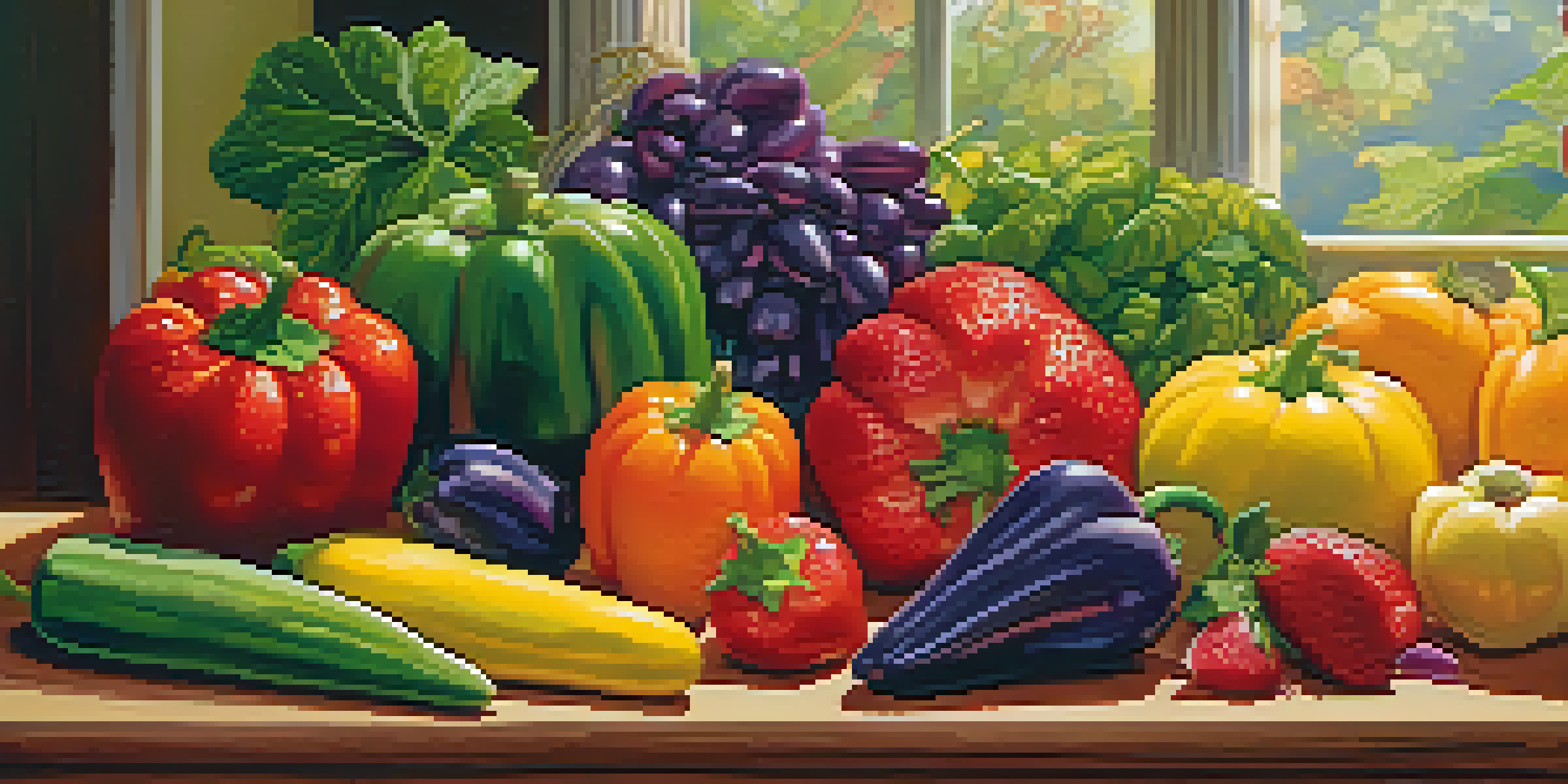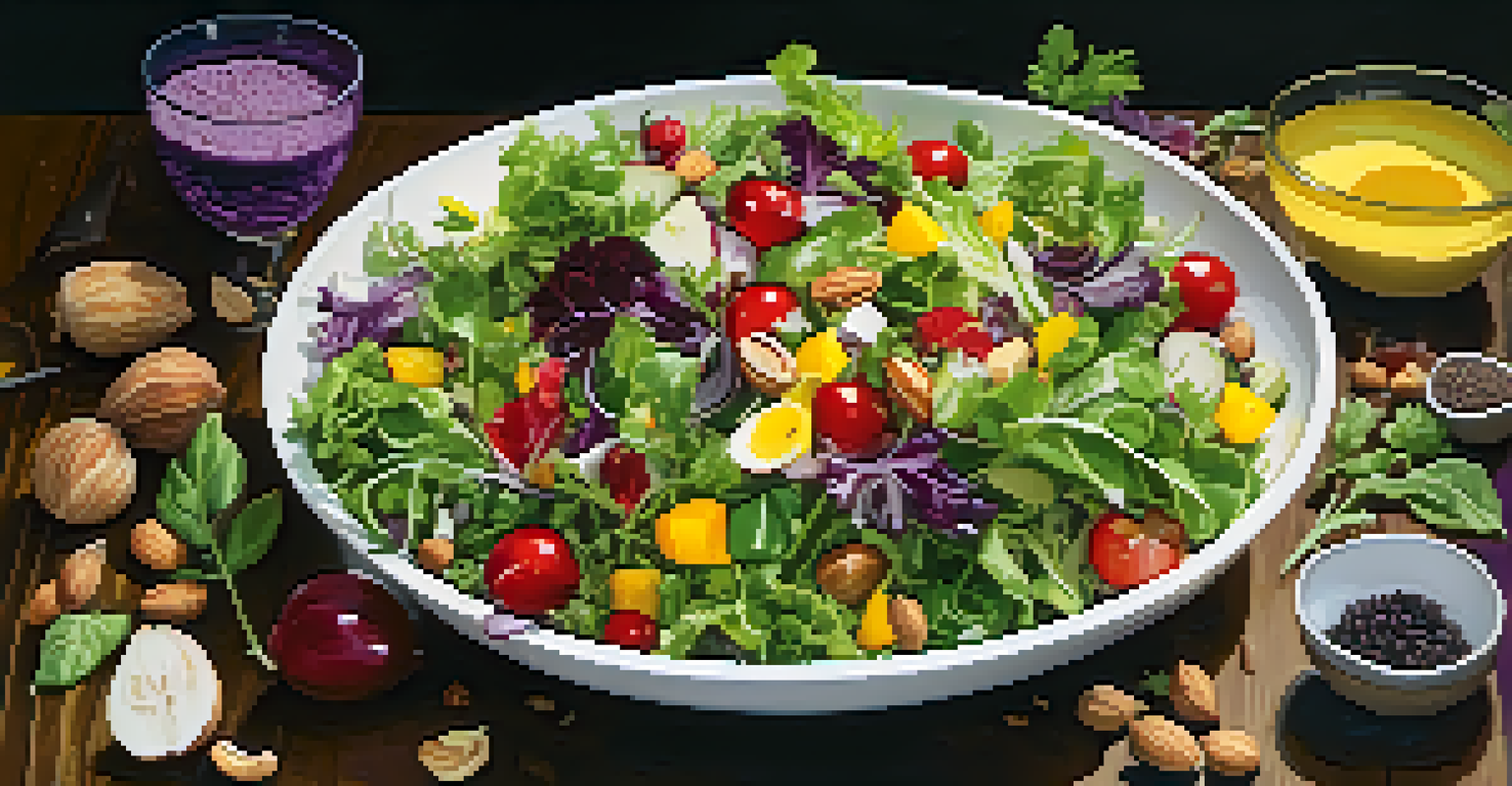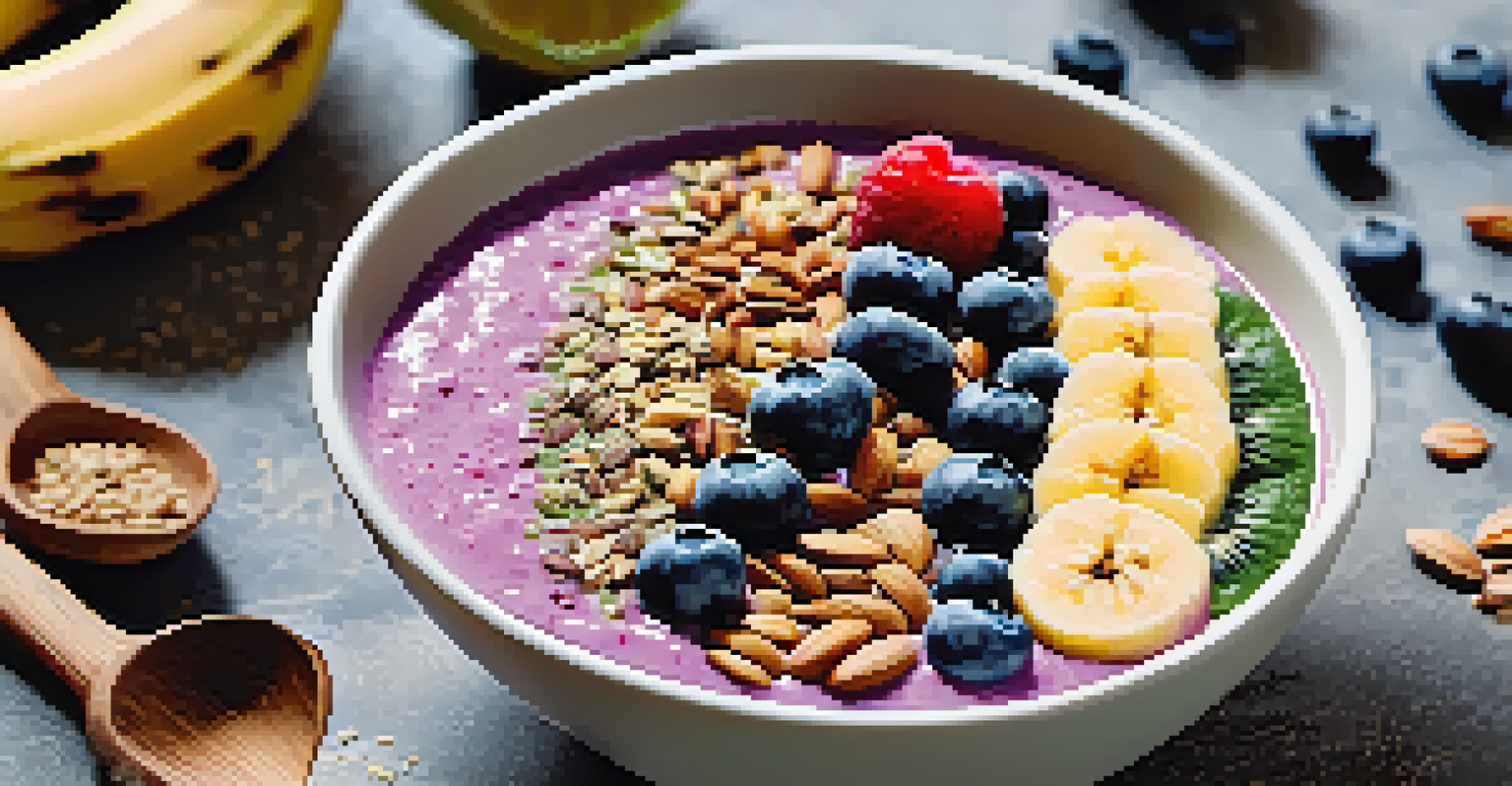The Psychology of Color in Raw Food Diets and Nutrition

Understanding Color Psychology in Food Choices
Color psychology plays a significant role in how we perceive food. When it comes to nutrition, colors can evoke feelings and associations that influence our choices. For example, vibrant red fruits like strawberries often symbolize sweetness and freshness, enticing us to reach for them.
Colors, like features, follow the changes of the emotions.
The colors of foods can also trigger cravings and feelings of hunger. Bright oranges and yellows, like those found in carrots and bell peppers, are often associated with warmth and happiness, making us more likely to incorporate these foods into our diets. Understanding this connection can empower us to make healthier choices.
Moreover, different colors represent various nutrients. Greens like spinach and kale are packed with vitamins, while purple foods like eggplants are rich in antioxidants. By recognizing the psychological impact of these colors, we can enhance our diets not just visually but nutritionally.
The Role of Color in Raw Food Diets
In raw food diets, color plays a pivotal role in attracting and retaining interest in meals. A plate filled with a rainbow of fruits and vegetables not only looks appealing but also signals a variety of nutrients. This visual appeal can enhance our eating experience and encourage healthier eating habits.

For instance, incorporating foods from different color groups can ensure a wide range of vitamins and minerals. A salad bursting with greens, reds, yellows, and purples doesn't just please the eye; it also maximizes nutritional benefits. The notion of 'eating the rainbow' is not just a catchy phrase but a practical approach to nutrition.
Color Influences Food Choices
Colors evoke emotions and associations that significantly impact our food preferences and cravings.
Additionally, the presentation of raw foods can influence our perception of taste. When we see a beautifully arranged platter of colorful fruits, we're more likely to associate it with freshness and flavor, prompting us to indulge. This aesthetic aspect of raw food preparation highlights the importance of color in making nutritious choices.
Emotional Associations with Food Colors
Colors evoke emotions, and these feelings can affect our food preferences. For example, greens are often linked to health and wellness, while browns may evoke feelings of earthiness and grounding. This emotional connection can drive our choices in a raw food diet, making us lean towards certain colors based on our mood.
You can’t use up creativity. The more you use, the more you have.
When people feel stressed or anxious, they might crave the comfort of warmer colors like orange and yellow. These colors are typically associated with cheerful and uplifting feelings. By understanding these emotional triggers, we can better manage our cravings and make intentional choices that contribute to our overall well-being.
On the flip side, darker colors like deep purples and blacks can be seen as more sophisticated and luxurious. Incorporating these colors into our diets can elevate our meals, making them feel more special. Recognizing these associations can help us craft meals that not only nourish our bodies but also satisfy our emotional needs.
The Influence of Color on Appetite and Portion Sizes
Research suggests that color can influence our appetite and even the portion sizes we serve ourselves. For instance, studies have shown that people tend to eat less when their food is presented on contrasting plates. A vibrant salad on a white plate can appear more appealing and encourage us to savor smaller portions, aiding in mindful eating.
In contrast, using similar colors for food and plate can lead to overeating. If a colorful dish blends into the background, we might not register how much we're consuming. This awareness of color can be a useful tool for those looking to manage their portion sizes effectively.
Visual Appeal Enhances Nutrition
A colorful plate not only attracts attention but also indicates a variety of nutrients, promoting healthier eating habits.
Moreover, certain colors can stimulate appetite. For example, red and yellow are known to increase hunger levels. By strategically using these colors in meal preparation, we can create an inviting atmosphere that encourages consumption of nutritious raw foods.
Cultural Perceptions of Color in Nutrition
Cultural perceptions of color can greatly influence dietary choices. In many cultures, certain colors are associated with specific meanings or celebrations, and this can extend to food. For instance, in some Asian cultures, red is considered lucky and is often incorporated into celebratory dishes.
Understanding these cultural nuances can enhance our appreciation of food. It can also inspire us to explore diverse raw food options that may not be typical in our own diets. This exploration can lead to a richer culinary experience and a broader understanding of nutrition.
Additionally, incorporating culturally significant colors into our raw food diets can foster a sense of belonging and community. Sharing meals that reflect our cultural backgrounds can be a powerful way to connect with others while promoting healthy eating habits.
Using Color to Enhance Meal Preparation
Meal preparation can become more enjoyable and creative by focusing on colors. Choosing ingredients based on their hues can inspire us to try new combinations and flavors. For example, a vibrant smoothie made with spinach, blueberries, and bananas not only looks beautiful but also packs a nutritional punch.
When we prioritize color in our meal prep, we also encourage a more balanced diet. This approach can lead to meals that are visually appealing, nutritionally diverse, and emotionally satisfying. Cooking can transform into a fun activity rather than a chore when we consider the aesthetic aspects of our food.
Cultural Color Perceptions Matter
Cultural associations with colors can shape our dietary choices and enhance our food experiences.
Moreover, the act of combining different colors can become a mindful practice. Taking the time to select and prepare colorful ingredients allows us to connect with our food on a deeper level, fostering a greater appreciation for what we consume and its impact on our health.
The Future of Color in Nutrition and Diets
As the wellness movement grows, the role of color in nutrition is likely to gain more attention. Future trends may involve innovative ways to incorporate color psychology into meal planning and food marketing. This shift could lead to more engaging and health-conscious eating experiences.
We may also see advancements in food technology that enhance the visual appeal of healthy foods. For instance, naturally colorful ingredients might be promoted more heavily, encouraging consumers to opt for vibrant, nutrient-rich options. This could result in a shift towards more colorful plates in everyday meals.

Ultimately, understanding the psychology of color in nutrition can empower individuals to make informed choices. As we navigate our dietary preferences, embracing the significance of color can lead to healthier lifestyles and a more enjoyable relationship with food.